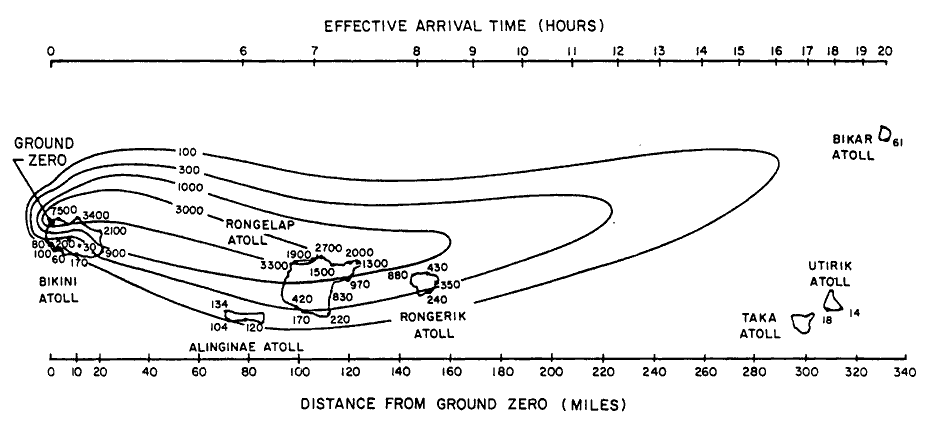Ever seen Threads? Americans are big on The Day After because it ran on prime time during the apogee of the"Morning in America" Reagan Era. It depicts, in a cinematic and semi-hopeful fashion, Jason Robards dying of radiation sickness as he tries to save the people of Lawrence, KS in the wake of nuclear armageddon. Most people would argue that The Day After was one of the bleakest things to ever run on prime time television. After all, the world fucking ends and everybody dies. But you at least get to see everybody struggling and trying to rebuild. The sun is shining. None of the ugly shit associated with, you know, actual war really gets much in the way of airplay. Lots of fancy stuff: But really, it's a trite, rose-colored view of a nuclear exchange. We all forgot, of course. That's how things like Jericho happen, where Skeet Ulrich and friends protect their town against a marauding motorcycle gang with a bunch of hunting rifles and an endless supply of candles. Threads wasn't like that. Threads was real. Threads took as its fundamental assumption that any nuclear exchange would be primarily between the USA and the USSR and any damage done directly to the UK would be pre-emptive collateral associated with the silos in Scotland. It presumes that the UK really isn't a player in nuclear politics, no matter how hard it wants to be, and that the majority of all casualties will be elsewhere than the UK. The UK figured they had 106 targets across the entire country. And it still ends with 95% fatalities, an utter collapse of civilization, and a return to subsistence farming akin to an era before the invention of potatoes. Threads does not fuck around. There's this lingering presumption amongst '80s kids that nuclear war was somehow survivable if only you could plan properly. Part of that was the fact that "eyes melt skin explodes everybody dead" isn't cinematic. Part of that was the fact that we didn't really understand just how much the USSR had doubled down on biological warfare. Or that they'd automated their entire response. http://en.wikipedia.org/wiki/Dead_Hand_(nuclear_war) So let's suppose that the USA managed to launch every.single.missile at the USSR, which was somehow asleep. Or, shit - let's just suppose that the USA only launched enough missiles to take out silos'n'shit. Free and clear. Soviets never know it's coming. Here's what happens next: 1) The USSR automatically launches its entire nuclear arsenal. Let's say it's '88. That's 45,000 warheads, each between 5 and 500 times as powerful as Hiroshima. 2) The USSR launches whatever bioweapons it has prepped. Congratulations - if you make it to the end you still have anthrax to deal with. 3) 65,000 nuclear weapons reduce the northern hemisphere to radioactive dust. 4) Fallout circles the globe for weeks. And not cute, cuddly "oh shit Fukushima" fallout, either. We're talking "dead in 6 months from 1 sV exposure" fallout. Everywhere. 5) The sky goes dark and stays that way. That's research from this year, not hoary old shit from the '60s. http://en.wikipedia.org/wiki/Nuclear_winter#2014 6) The jetstream is full of Cesium 137 and the topsoil is full of anthrax. Cesium 137 has a half-life of 30 years and Gruinard Island became safe to visit only after the top six inches of topsoil were incinerated and the whole island sprayed with formaldehyde. You can maybe survive a nuclear exchange, depending on where you are. Nobody survives a nuclear war. The only real question is how quickly you die. To answer your question more specifically, Michigan is under the jet stream and downstream from dozens of silos in Wyoming and Montana. Assuming nobody bothered to nuke Detroit (a stupid assumption): ...you'd still be swimming in fallout. In the dark. In anthrax. With radiation burns and cataracts. And nothing to eat. In a nuclear winter. As far as "early targets" it all would have been over within an hour anyway.

global ozone losses of 20-50% over populated areas, levels unprecedented in human history, would accompany the coldest average surface temperatures in the last 1000 years. We calculate summer enhancements in UV indices of 30-80% over Mid-Latitudes, suggesting widespread damage to human health, agriculture, and terrestrial and aquatic ecosystems. Killing frosts would reduce growing seasons by 10-40 days per year for 5 years. Surface temperatures would be reduced for more than 25 years, due to thermal inertia and albedo effects in the ocean and expanded sea ice. The combined cooling and enhanced UV would put significant pressures on global food supplies and could trigger a global nuclear famine.

